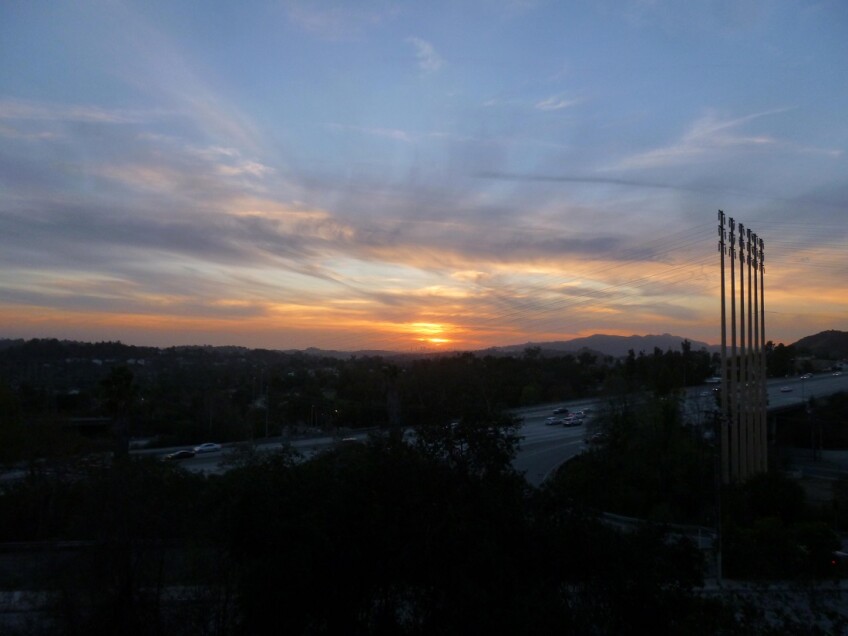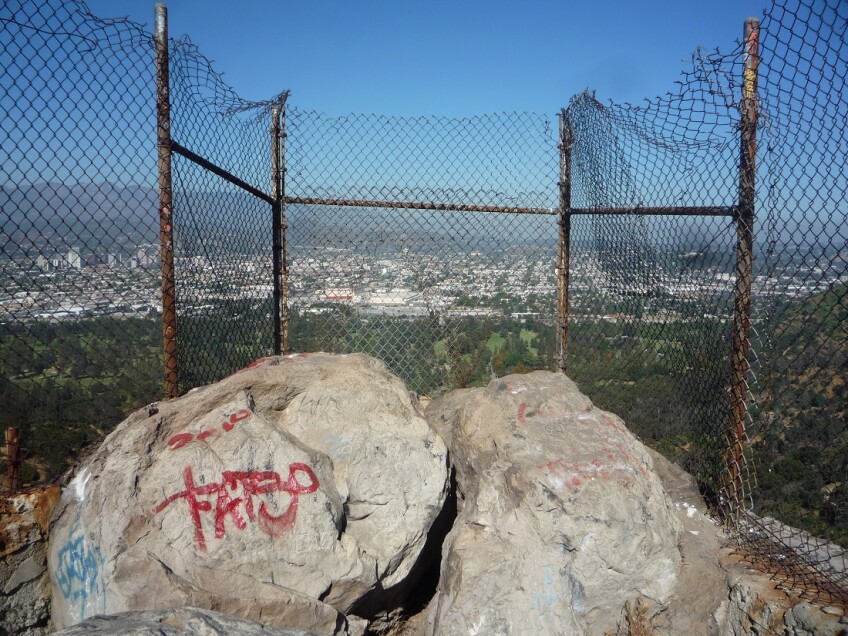5 Monumental Rocks in Southern California

In Southern California, it can seem like everyone is some type of hiker. There are the Runyon devotees, the stair climbers, the peak baggers, the rock climbers, the boulder scramblers… the list goes on.
But sometimes, a cluster of boulders feels like too much for the average person who likes to hike but isn’t really a hiker.
Can’t you just climb a mountain (or a hill) that’s not too crazy, have something to look at (and look out from) at the top, and then go back home?
Yes, you can! Because just one rocky peak can be good enough of a beacon to get you out on the trail and give you a little elevation.
So, here are five great rocky climbs that don’t require a lot of time, much hiking expertise, or any equipment — aside from your hiking boots and sunscreen.
1. Sandstone Peak, Santa Monica Mountains, Malibu
Sandstone Peak was once 10,000 feet above sea level — but now, after 10 million years of erosion, it stands at a mere 3111 feet, which is still the highest point in the Santa Monica Mountains. Thanks to the ancient volcanic eruptions that also formed Sandstone Peak, the surrounding area is known for its interesting geological formations, including Split Rock (on the way to Sandstone Peak along the Mishe Mokwa Trail), Balanced Rock (accessible via an unmaintained trail off the Mishe Mokwa Trail), and Skull Rock. There are two ways to Sandstone Peak: a short, steep, direct out-and-back from the parking lot, or a long, meandering, circuitous, more gradual loop along the Backbone Trail. I prefer taking the long way to enjoy the diverse scenery on a gentler climb. It’s still not that gentle — it can be steep and rocky and dry and high — but it does offer some shade and some cool ocean breezes. When you get to the top, climb the exposed rock surface to the plaque marking Mount Allen and sign the register.


2. Eagle Rock, Topanga State Park and Northeast L.A.
Eagle Rock in the Santa Monica Mountains is kind of a junior version of Sandstone Peak, but the trail to it also offers a great hike through Trippet Ranch (once a "gentleman's ranch" for a getaway in the mountains), where you may spot some mule deer and some other sandstone formations (including one that looks like Jabba the Hutt). This Eagle Rock is a boulder outcropping that’s not to be confused with the rock of the same name with a natural cleave that casts a shadow of, some say, an eagle. But actually you can do a bit of climbing around that Eagle Rock, too, if you set afoot on the John Stillion Memorial Pathway of the Eagle Rock Canyon Trail. It’s a pretty short trail that doesn’t take you very far or very high, but it’s a great spot to watch the sunset. Have a little rest on the benches at the top, and head back down before dark so you can keep an eye on your footing.


3. Bee Rock, Griffith Park
One of the more interesting natural landmarks of Griffith Park, a sandstone outcrop called “Bee Rock,” can also be a little tricky to navigate to and from. First, you’ve got to climb up and over the Merry-Go-Round Parking area (where many hikes in Griffith begin), head through the Old Zoo, and find an old ravine. Shortly thereafter, the trail becomes narrow, steep, and overgrown. You’ll be climbing up with a nice view of the park and the city below until you reach a rusty fence, which leads you to the chain-linked peak of the rock that some say is shaped like a beehive. Keep track of where the trails split, because it’s easy to get turned around at the top and end up going the wrong way down. At the top, the view is breathtaking — though somewhat obstructed and graffitied (as are the rocks on the way up). Beware of actual bees, which seem to like the pocks and the pits in the rock.


4. Pumpkin Rock, Norco
In a small town just north of Corona (hence, “Norco”), a pumpkin smiles down on Horsetown USA. Well, it’s not a real pumpkin — it’s a pumpkin-shaped rock, painted to look like a pumpkin. To get there, you can park on a residential street in one of the newer housing developments (right by the Hidden Valley Golf Club) at one of the trailheads for the “Norco Hills” and head up the dirt path toward the La Sierra Hills. Nearly every trail in Norco is shared between hikers and horses, so watch where you step. Plod along, keeping an eye out to the north, and there you’ll see it: a bright dash of orange in a sea of sandy brown terrain. At first, you might think it's just an elaborate graffiti project, considering how vandalized the rest of the trail is. But it got its paint job about 20 years ago to cover up all of the vandalism on it. It used to be painted as more of a traditional pumpkin with the triangle eyes and nose, but now it's more like a "Day of the Dead"-style skull rock (or, as some say, an orange-and-black Jack Skellington). Unfortunately, the makeover didn't stop vandals from tagging it; so periodically it's got to be repainted all over again. It makes for a great fall hike, especially when the Southern California sun is still relentless in its heat. Pumpkin Rock is big enough to provide some nice shade to rest in before heading back down.

5. Painted Rocks, Fort Irwin National Training Center
As long as we’re talking about painted rocks, Fort Irwin is worth mentioning for its clusters of boulders known as “The Rockpile”. These painted rocks have become a monument to the squadrons visiting Fort Irwin for training — in remembrance of how they braved the sun, the wind, the sand, and the heat in this "desert retreat". They may have started painting their insignias here on a lark, but now these units have established a tradition that is carried on by subsequent soldiers who pass through. Although they’re outside the National Training Center’s security checkpoint, the area is 30 miles from the nearest somewhere. But still, go watch the sun rise from behind the rocks and listen to the sonic booms in the distance as you scramble your way around the pile. It’s more of a walk and a meander rather than a hike, but it is a unique adventure.


Bonus:
I wouldn’t recommend climbing Mt. Lowe just to see its rocks, since there’s far more in terms of the history of the old railway to draw you there. But if you’re already climbing the old right-of-way just past Echo Mountain, take note of Sentinel Rock — a postcard view of the path of the old trolley that you can still see today. And if you make it all the way up to Inspiration Point, have a seat on Easter Rock — where Easter services were held at sunrise for many years, back in the mountain’s heyday.




